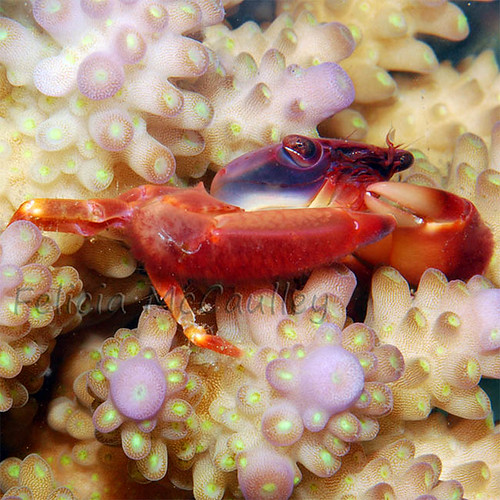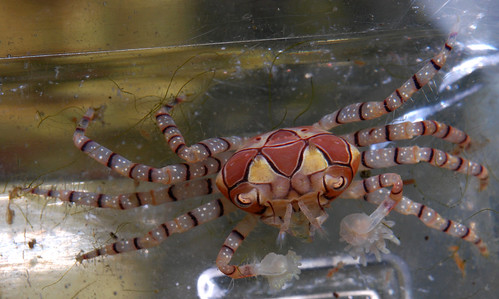I bought a beautiful pink and yellow sea cucumber
Pentaca anceps on Thursday from my local shop. Unlike their substrate-crawling cousins, these sea cucumbers are filter feeders like the very closely related sea apples. I'm aware that they can be poisonous when they are stressed or die, but I've read that this species is less likely to "go nuclear" than the larger sea apples. Just in case, I have stocked up on fresh carbon, polyfilters, and some extra water-change water.
I was half expecting to find some hitchhikers on the sea cucumber; they are pretty common. Crabs, fish, and snails are known to live in or on sea cucumbers. Some are parasitic, feeding on the internal organs or skin of the cucumber, and others, like the pearlfish and swimmer crabs, are commensal.

Here you can see the snail on the cucumber. The snail is hard to see because it is the same color as the cucumber and looks like just another a knobby part on the sea cucumber. The snail in this photo is located just below the feather feeding tentacles. Click on the photo for a larger view.

When I finally noticed this snail, which is roughly the size of a grain of rice or slightly smaller, I pulled it off with some tweezers. Its shell was very slippery and hard to grasp, even with the metal tweezers. When I started to grasp it, it seemed to hold to the sea cucumber tighter.
Don the snail expert from
Reefcentral.com was kind enough to try to ID this parasitic pyramid snail for me. He believes it may be a
Melanella araeosomae of the family Eulimidae. He doesn't think it's something to be overly concerned about, as the snails do little damage to their hosts. He also told me that the shells of these snails are clear, and that the color we are seeing is the color of the actual body of the snail inside the shell.

Baby brine shrimp and Rotifers are too large for sea apples and sea cucumbers to digest. Because the tentacles are so sticky, aquarists have witnessed what appeared to be the sea apple or sea cucumber eating brine shrimp, when in fact it was simply stripping the unwanted "debris" from the tentacles and discarding it. In the home aquarium sea apples and sea cucumbers must be fed
phytoplankton several times a day to remain healthy.
"Studies in which researchers sifted the gut contents of a variety of suspension-feeding sea cucumbers found that all but one species ate only particles of less than 53 μm in diameter (for comparison, newly hatched brine shrimp are approximately 400 μm, and my survey of commercially prepared invertebrate foods found such products contained a mean particle size of 365 μm 696 μm, see Toonen et al. 2002). Researchers have found that the majority of the diet of suspension feeding sea cucumbers such as sea apples consist of phytoplankton cells (primarily larger species of phytoplankton such as Coscinodiscus, Chaetoceros, Skeletonema, and Thalassiosira), with occasional ingestion of tiny invertebrate eggs and larvae (Hamel & Mercier 1998). In fact, even full-grown rotifers (which average between 75 and 300 μm, depending on the strain) are too large for most suspension feeding cucumbers to eat..."
Read the full, informative article by Rob Toonen, Ph.D for
Advanced Aquarist's Online Magazine.
http://www.advancedaquarist.com/issues/mar2003/invert.htm
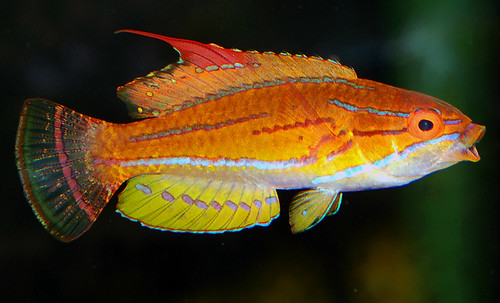








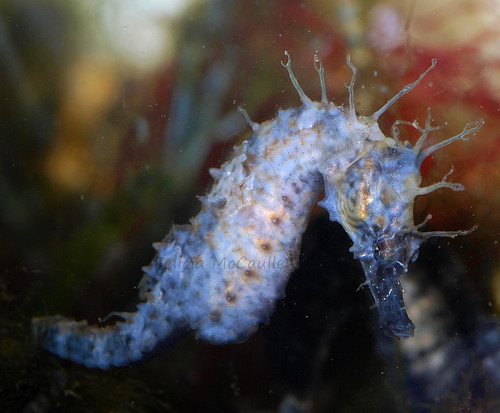
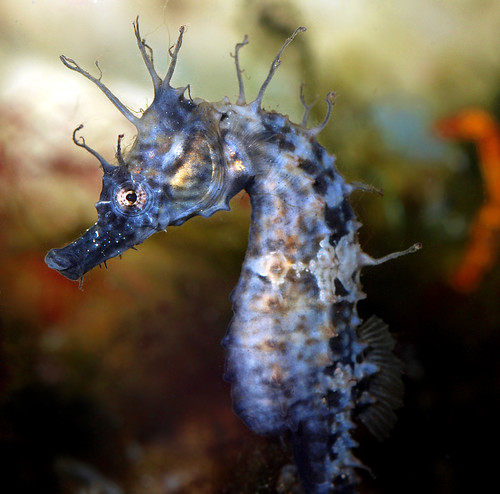
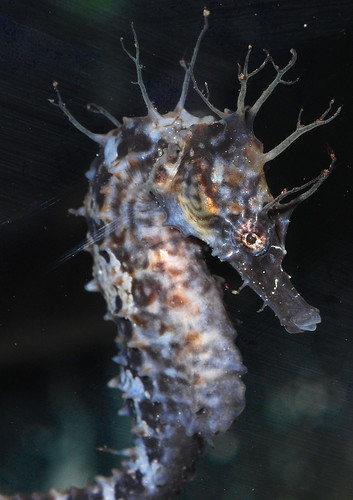


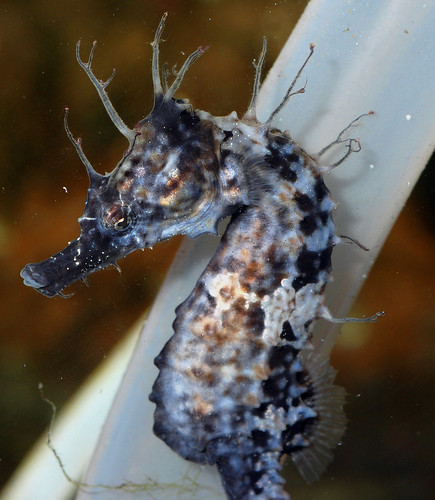
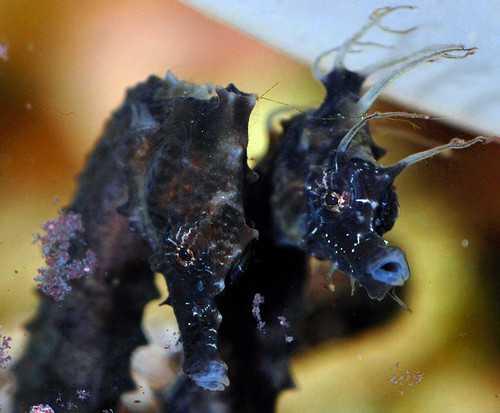
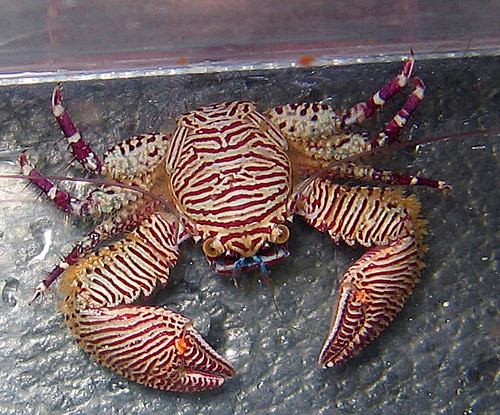
 This fossil crab is a Galena bispinosa from the Pliocene epoch. It is estimated to be 2 million years old and was found on the west side of the Cape York Penninsula, Queensland, Australia. Click on any photo for a much more detailed view.
This fossil crab is a Galena bispinosa from the Pliocene epoch. It is estimated to be 2 million years old and was found on the west side of the Cape York Penninsula, Queensland, Australia. Click on any photo for a much more detailed view.  The pair of crabs pictured here are in the Humbolt State University National History Museum. It amazes me how much these fossil crabs looks like crabs that are alive today.
The pair of crabs pictured here are in the Humbolt State University National History Museum. It amazes me how much these fossil crabs looks like crabs that are alive today. When I first saw this fossil, I thought of how much it reminded me of modern shameface crabs and strawberry crabs. The photo on the left is a Liomera bella, a type of strawberry crab. This photo was taken by Bryan Harry.
When I first saw this fossil, I thought of how much it reminded me of modern shameface crabs and strawberry crabs. The photo on the left is a Liomera bella, a type of strawberry crab. This photo was taken by Bryan Harry.


 A very popular Nano aquarium crustacean is the sexy shrimp, Thor amboinensis. These shrimp hold their abdomens straight up and wave them back and forth, which is how they got their name. These diminutive shrimp only grow to a little over an inch in length. In the wild they live among the tentacles of anemones, but will live on Ricordea or other mushroom corals in the aquarium. They are very peaceful shrimp and may be kept in groups. In the wild they eat the mucous from their host anemone and any food that gets stuck to the tentacles. In an aquarium, they will eat meaty foods like frozen mysis, cyclops, or brine shrimp.
A very popular Nano aquarium crustacean is the sexy shrimp, Thor amboinensis. These shrimp hold their abdomens straight up and wave them back and forth, which is how they got their name. These diminutive shrimp only grow to a little over an inch in length. In the wild they live among the tentacles of anemones, but will live on Ricordea or other mushroom corals in the aquarium. They are very peaceful shrimp and may be kept in groups. In the wild they eat the mucous from their host anemone and any food that gets stuck to the tentacles. In an aquarium, they will eat meaty foods like frozen mysis, cyclops, or brine shrimp.